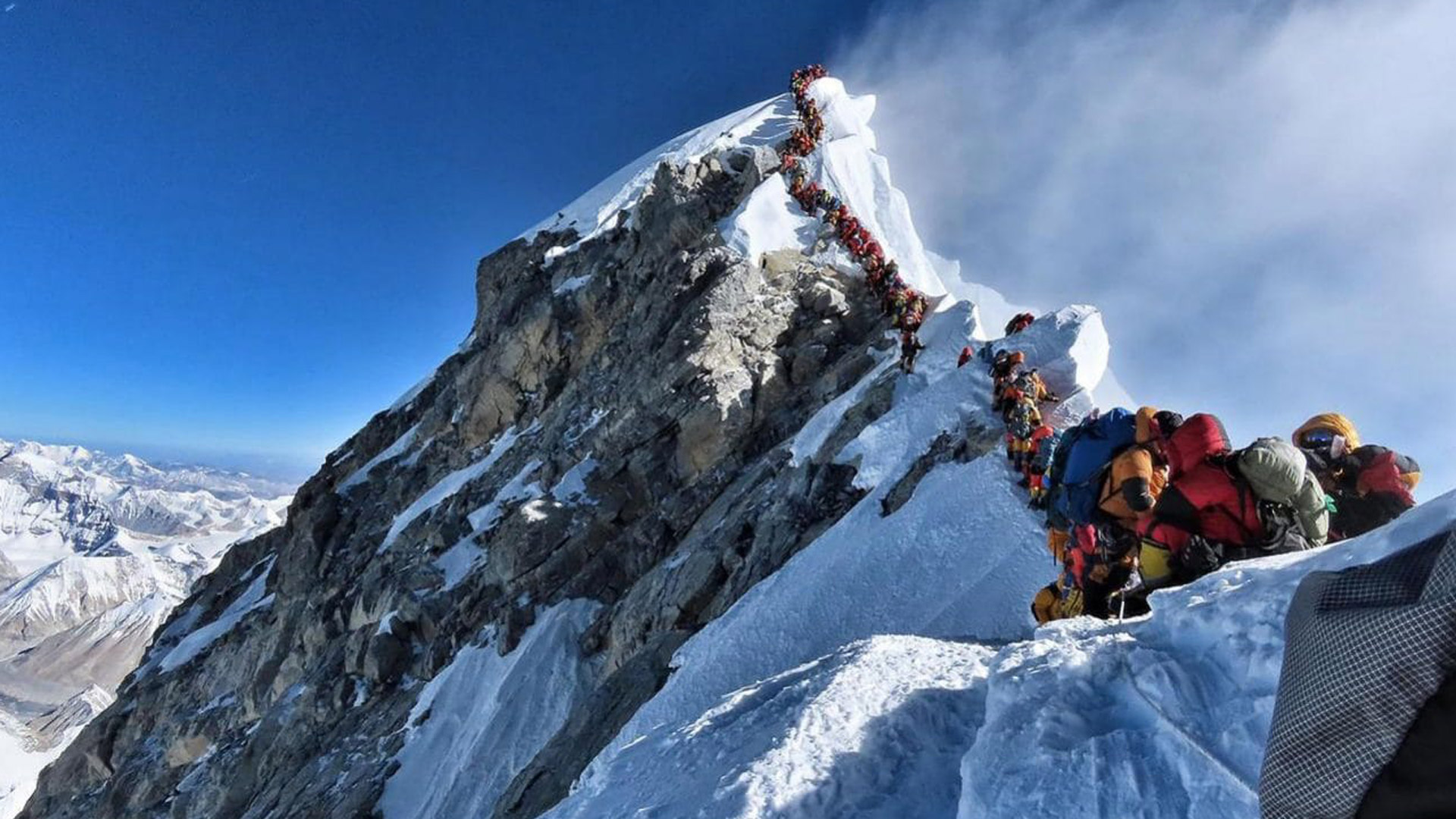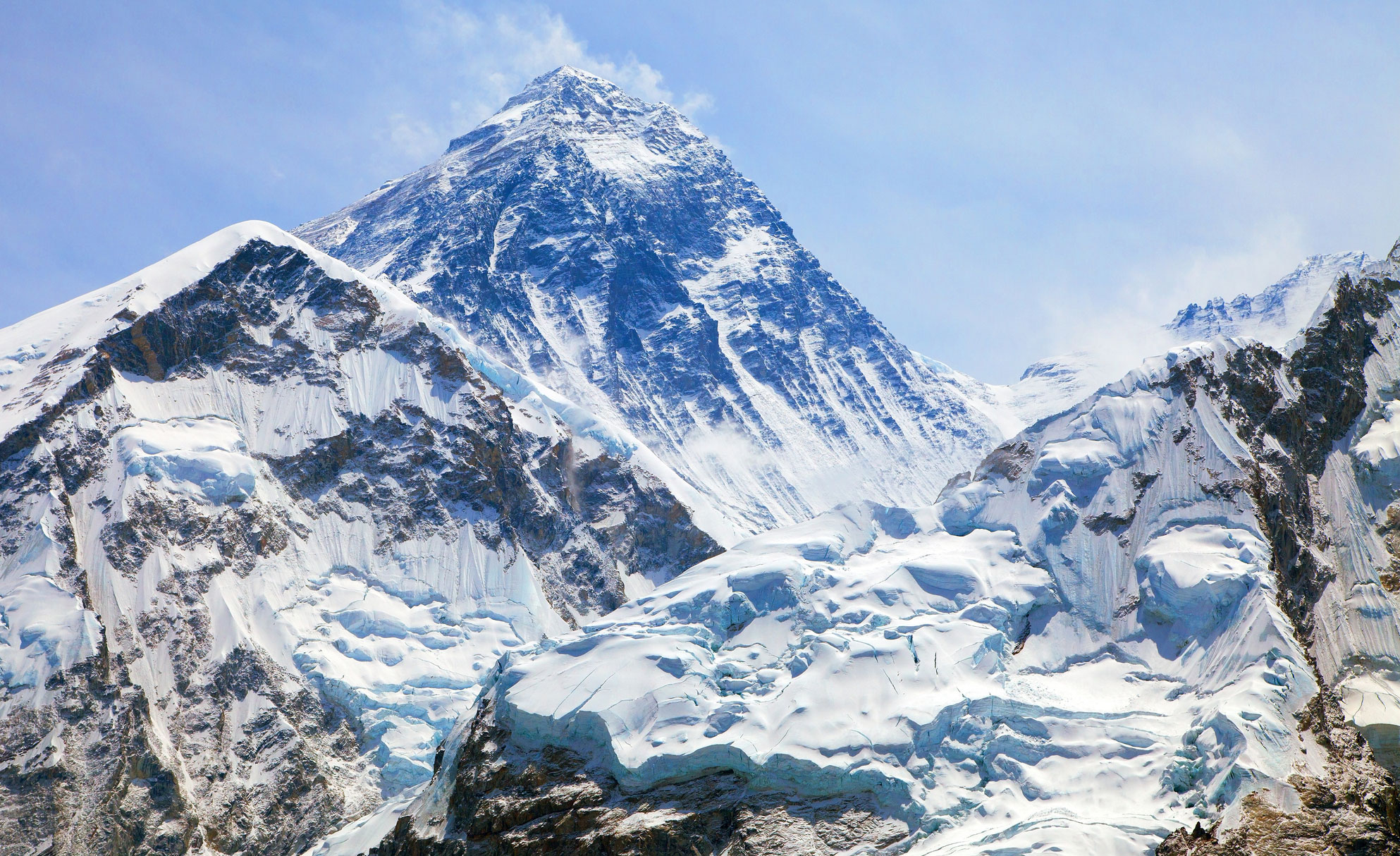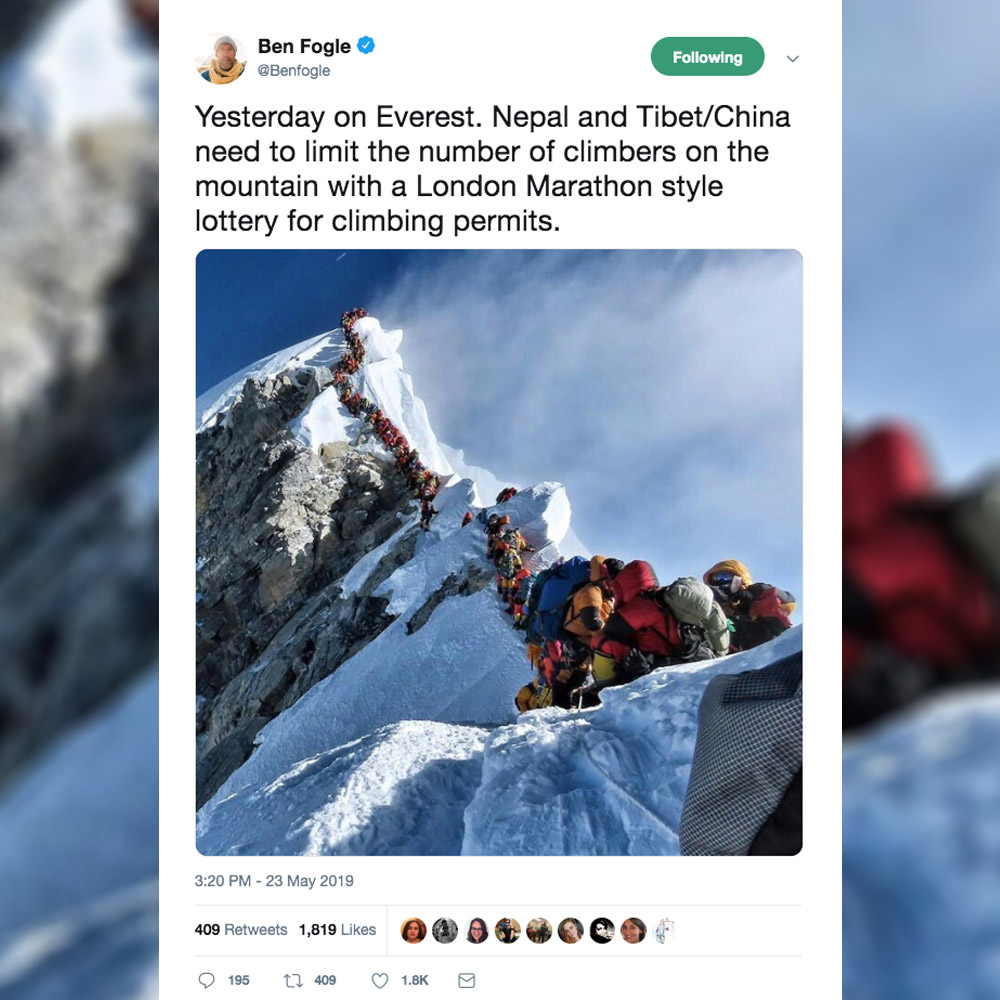Expensive, long queue times, exploited workforce. We could be talking about Disneyland Paris. We’re actually talking about Everest, the world’s highest mountain and, probably because of that status, arguably its worst mountain as well.
This week, a photo taken of a “human traffic jam” just beneath the summit of the mountain has gone viral (see above). It looks like the kind of mad queue you’d get at a theme park, or a particularly busy post office, not on the planet’s highest mountain, above 8,000 metres, in what is cheerfully known as the “death zone”. It’s an obscene image, a symbol of how intense man’s obsession with this mountain has become, the endless dick swinging competition of “climbing the big one” writ large.
“Expensive, long queue times, exploited workforce. We could be talking about Disneyland Paris”
Even more depressingly, it was revealed that the mountain’s congestion had been to blame for the death of three climbers. After waiting in line for more than two hours on the way up, American Donald Lynn Cash, 55, and Indian Anjali Kulkarni, 54, collapsed and died on the descent. Indian woman Kalpana Das passed away in similar circumstances.
All this has brought discussions around the over-commercialisation of the mountain into sharp focus, and with good reason. Guiding companies, it seems, have turned what should be an impressive mountaineering feat into an exercise in “If you’ve got the cash, we’ll get you up there.” What this has effectively led to is a procession of people chancing their arm for a shot at adding ‘climbed Everest’ to their LinkedIn profile, in the vague hope it’ll make them stand out in the world of investment banking. It also means that those guiding companies are accepting vast sums of money from climbers, knowing full well about these high-risk queues happening at the cruising height of passenger planes.


